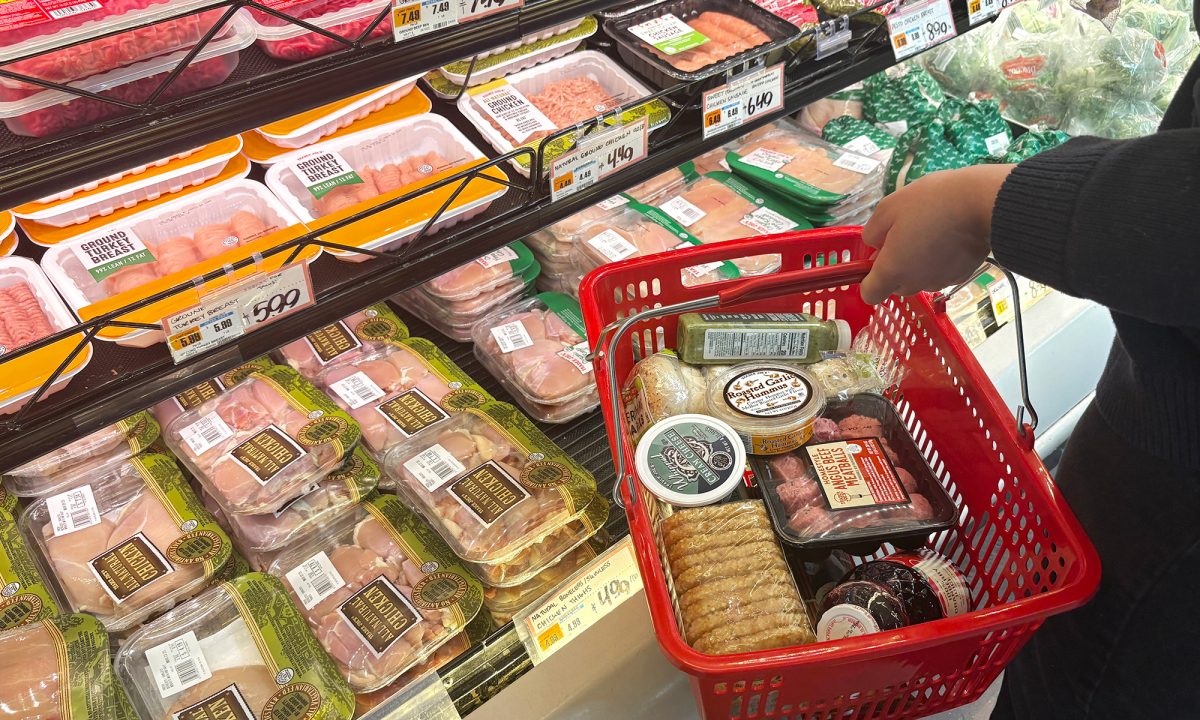As of February, the cost of store-bought food in the Boston area has risen by 19% since 2021. According to The Greater Boston Food Bank, in 2024, an estimated 1.9 million Massachusetts residents are food insecure, representing 34% of state households.
Food insecurity is a term used by the United States Department of Agriculture to define individuals who are a part of a household with limited economic and social means to access enough food. People who are food insecure are especially likely to develop chronic pain, depression, anxiety and other health conditions. As food prices and insecurity rise in Boston, one thing is for certain: The changes are not going unnoticed.
For 58-year-old Wayne Callahan, a program manager at the Justice Resource Institute and former manager at the Fenway Target, the price increases are not only a professional concern but a personal one.
“I do see prices going up,” Callahan said. “I’m spending a lot more money on my food budget. I’m going out much less. I’m looking for bargains.”
Eighty-two-year-old Boston resident Nicholas LiVolsi said he noticed an uptick in news coverage on rising grocery prices.
“Who wants people who are hungry? I mean, no! It affects everyone. It’s the one for all and all for one,” LiVolsi said.
Nationally, high prices are affecting many citizens, with nearly 47.4 million people in the United States living in food-insecure households in 2023, an increase from the previous year, according to the U.S. Department of Agriculture.
So, why is this happening?
Overwhelmingly, fluctuations in food prices follow the national trend of inflation. An increase in government financial aid to households to prevent mass unemployment during COVID-19 raised nationwide inflation quickly in January 2021. Grocery prices in the Boston area and other cities skyrocketed as a result. In 2023, national inflation decreased to near pre-pandemic rates but grocery prices around the country stayed roughly the same.
For LiVolsi, Boston’s rising grocery prices are connected to government policy, which he believes has been playing a bigger role in recent months.
“It’s not surprising given that [President Donald] Trump’s in the White House,” LiVolsi said. “He has no clue about economics.”
William Masters, a professor of food economics and policy at Tufts University, said international tariffs heavily influence food prices. Inflation will likely rise again following taxes Trump enacted with Mexico and Canada, the United States’s top trade partners as of January.
“An enormous amount of food crosses borders,” Masters said. “If you make it harder to trade with your neighbors, that just makes everyone poorer and makes prices higher. … There’s no way that these taxes, which is what a tariff is, don’t get paid by someone.”
Within specific markets and grocery chains, dynamic price patterns also affect individual product prices. Agricultural production, industrial structure of enterprises and transportation play key roles in how much food costs, Masters said.
Quincy-based Stop & Shop grocery stores were recently accused of intentionally increasing prices in some neighborhoods of the city while keeping prices lower in the suburbs. According to a group of teens conducting research for the Hyde Square Task Force, the chain was unreasonably raising product prices above the market price. According to a study from the task force in late 2023, a cart of groceries at the Jamaica Plain Stop & Shop was 18% more expensive than at a store in the more affluent Dedham suburbs. In October 2024, Sen. Elizabeth Warren accused the company of “engaging in corporate profiteering schemes.”
Climate is also a major contributor. Growing products such as cocoa, coffee and orange juice in the tropics are becoming more difficult to produce due to climate change, Masters said. Extreme weather such as hurricanes, drought and heavy rain are increasingly harmful to production of these products.
When asked whether rising prices affect her, 19-year-old Daisy Liles, a student at the Massachusetts College of Pharmacy and Health Sciences, responded empathetically. “When I’m on a crunch for money and I need food to eat, yeah. But otherwise, it doesn’t bother me too much, but I feel for other people.”
According to the 2025 Congressional budget waiting to be seen by the Senate after approval from the House on Feb. 25, the Trump administration plans to cut $230 billion of spending allocated by the House Agriculture Committee over a 10-year period. A bulk of the committee’s spending goes to the Supplemental Nutrition Assistance Program, or SNAP, which provided food aid to 16% of the Massachusetts population in 2024.
Cuts could include up to 21% of SNAP funding. The chairman of the committee, Pennsylvania House Rep. Glenn Thompson, told Politico in mid-February that he doesn’t plan to cut SNAP benefits. However, spending reductions of this size would likely affect the more than one million Massachusetts residents who receive assistance to put food on their tables.
As a program manager at the Justice Resource Institute in Boston, Callahan said that he sees how increasing prices are affecting the city’s locals.
“I help people who are experiencing food insecurity, families. I connect them to various resources,” Callahan said. “So I would like to see more food resources … for poor people because food’s wicked expensive for everyone.”









